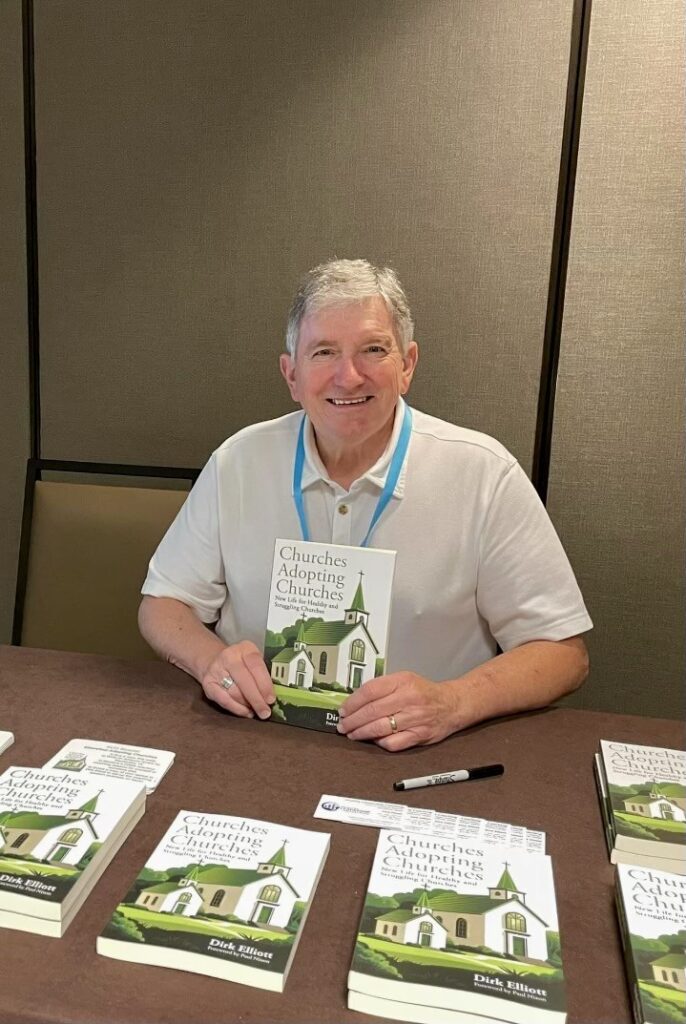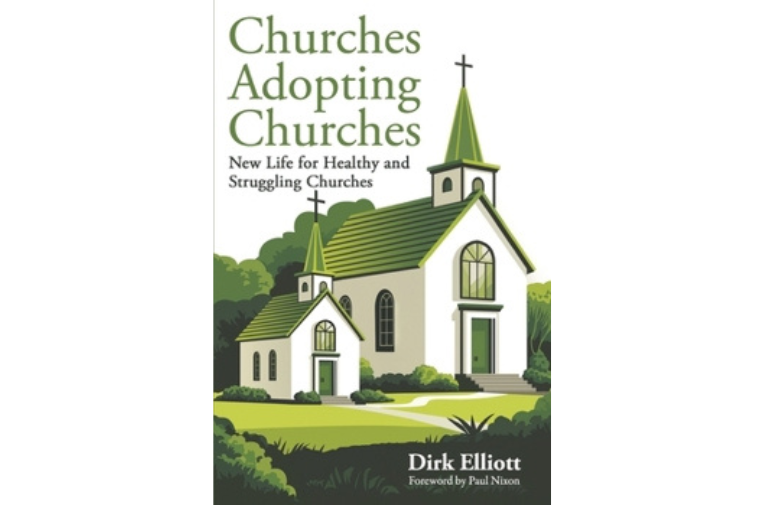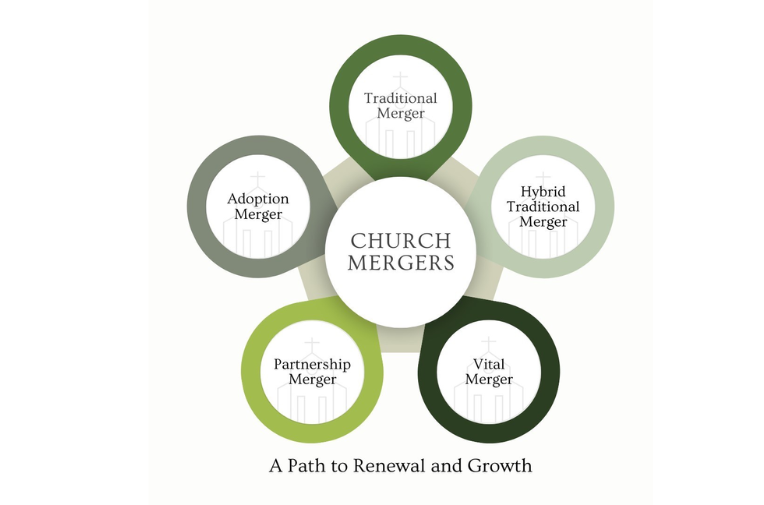-
Merger Models
4 min read
Churches Adopting Churches: New Life for Healthy and Struggling Churches is a practical, how-to handbook providing a road map for churches interested in adopting a church and for churches exploring being adopted. Churches Adopting Churches focuses on the process of church adoptions, providing insights and best practices from pastors and churches who have experience with adopting or being adopted. The book also explores the dos and don’ts of church adoptions, highlighting key learnings and best practices, as well as potential pitfalls to avoid. Overall, it aims to guide churches in making informed decisions and navigating the adoption process successfully, ultimately enabling healthy congregations to thrive in their ministries.

Churches Adopting Churches will be released on September 22, and available through most popular on-line book sellers. The Amazon link is Churches Adopting Churches.
Early orders can be purchased for $18.00 (plus shipping) from my bookstore or by contacting the author.
Want a preview. Here is part of the first chapter:
What is a Church Adoption Merger
New Life United Methodist Church (UMC) in Columbus, Ohio, lacked life. The church building was more than one hundred years old and in need of significant repair. Attendance had dropped to between twenty and thirty in worship. The people were tired. Their pastor had just moved away, and the church wasn’t sure it could continue. The only real life remaining was a 501(c)(3) nonprofit started a few years before to provide legal help, food, clothing, and a Sunday morning breakfast program to people in the community.
Then, things began to change. The District Superintendent, Linda Middelberg, invited Bishop Gregory Palmer to the neighborhood to see the potential firsthand. The property, located in downtown Columbus, was valuable. If sold, the church could never afford to move back into that neighborhood. Because the surrounding community was experiencing new life with businesses moving in, restaurants starting, and a growing arts community, the Bishop and other leaders saw potential and wanted to retain a church presence in the community. Bishop Palmer appointed Rev. Amy Aspey to serve as an interim pastor to help the remaining church members decide what they were going to do next.
Pastor Amy spent the first several months listening to the people and helping them discern their future. “Their future needs to come from them, not the conference,” she said. Amy then hosted three discerning conversations with members of the church. As a result, during that first year, Amy began casting a new vision for the church.
During that time, she had lunch with Marcus Atha, the pastor of North Broadway UMC, and they discussed a partnership between North Broadway and New Life Church. Working with the West Ohio Conference leadership, they agreed that North Broadway would adopt New Life and launch a new campus of North Broadway. The people of New Life church agreed, voting to be adopted and become part of North Broadway UMC.
Pastor Amy helped New Life members grieve as they came to realize the need for the church to make significant changes in the way they carried out ministry. New Life Church closed for a year and a half. During that time, funding was acquired from partnerships with the Conference and other churches in the area, as well as money invested from North Broadway for renovation, improvements, new lighting and sound systems, and an upgraded kitchen. During the time the church campus was closed, Amy joined the North Broadway staff and began learning the North Broadway church culture. She spent significant time networking with people in the community. In fact, Brad Aycock, the Director of Fresh Starts and New Beginnings for the West Ohio Conference, called Amy the “Star Networker” for the Conference. Amy held numerous pop-up events to connect with area residents. She leveraged partnerships with a local theater, a neighborhood hair salon, and a ministry for homeless teens, among other local businesses and ministries.
North Broadway UMC was started in 1924 by Como Avenue ME Church. In its early years, North Broadway responded to community needs by starting a childcare center, which has since become one of the best in Columbus, Ohio. The church also started a Community Development Corporation (CDC) that operates under a $3 million annual budget. The church eventually released the CDC to be its own entity with no ties to the church. “North Broadway is good at starting things. It is in our DNA,” Marcus said. Because of its background and culture, North Broadway had tremendous support from its members and voted to adopt and launch the Short North Campus (the new name for the New Life Church).
The lessons learned at the Short North Campus, coupled with Amy’s leadership, helped the parent campus as well as the adopted church. Amy’s example of networking helped North Broadway members realize they needed to do more networking. When Short North unveiled a new logo and updated its website, North Broadway updated its logo and website as well. The new logo, signage, and website have reinvigorated the North Broadway campus. The hundred-year-old North Broadway UMC has learned new church ways as this adoption process brought new life not only to the Short North area and church campus but also to the parent campus of North Broadway.
This story is not unique. More and more churches are coming together with missional purpose in new and effective ways, such as vital mergers, partnership mergers, and adoption mergers. Churches Adopting Churches: New Life for Healthy and Struggling Churches focuses on Adoption Mergers. Throughout this book churches share their adoption stories. In most cases, both the parent church and the adopted church have experienced increased health measured by aligning their mission and vision with ministry, developing and implementing a discipleship pathway, and reaching into the community. Adoption is one of many ways churches are joining together to thrive in ministry, bringing life to a plateaued or declining church and expanding the mission and ministry of both the parent and adopted church.
By definition, adoption is the process of creating a new parent/child relationship. A family is a unit that comes together and lives together. Church families experiencing adoption come together as a family, under the provision and guidance of a parent church. Just as families experience hope and joy for their future, mixed with a little anxiety, as they anticipate a new way of being family together, churches that adopt or are adopted experience renewed hope and joy, along with a little anxiety, as they anticipate a new way of being church together in their communities.
Adoption Merger
In most cases of a church Adoption Merger, a larger, healthy church (referred to here as the parent church or lead church) adopts or partners with another, usually smaller church (called the joining church). The parent church assumes responsibility for the joining church, including the finances, ministry, facilities, and staff. The joining church no longer exists as an autonomous church but assumes the name and identity of the parent church. Through the new adoption relationship, the churches become a single, more diverse family guided by the mission and vision of the parent church. Consequently, the parent church must be able to clearly articulate and follow its own mission and vision.
As Tomberlin and Bird state in their book, Better Together, “Mergers have the best chance of success when they are unified around a clear, biblically-based mission and share a common theology and faith practice.” It is vital to the success of an adoption merger that both parent and joining church grasp the concept that they are becoming one church.
Through the Adoption Model of merging churches, parent churches have the opportunity to expand into a new neighborhood or mission field, benefit from new resources of people and facilities, and reach more people with the Good News of God’s love and care. Adopted churches can maintain and extend their legacy while being part of a healthy church that reaches new people and transforms their neighborhood.
Why Adopt? Why be Adopted?
Why should a healthy church expand its resources through adoption? Why not just realize that a struggling church is at the end of its life cycle and close the doors?
Having clarity on these questions helps discern whether either church should pursue adoption. The bottom line must be that adoption is a way for both churches to have a more intentional missional focus, grow healthier as a community together, and share God’s love and healing grace in more diverse and effective ways.
Because a church may be the only one in its community, closure can mean a significant loss of potential. Mark Jobe, the Senior Pastor of New Life Community Church in Chicago, a twenty-six-campus church with over forty worship services, is passionate that churches should not be closed. “When a church closes, the sacred history of that church is lost. I am convinced that several valuable assets are lost each time a church building is closed and converted to a shopping strip or multi-unit condo in urban areas, Jobe said.”
At the end of the day, the joining church is saying “yes” to new leadership, “yes” to new ministries, “yes” to a new governing style, “yes” to new worship, “yes” to a new mission, “yes” to new people, and “yes” to new life.
The parent church is also saying “yes.” “Yes” to becoming a multisite, “yes” to expanding the footprint of the church, “yes” to new staffing, “yes” to a new organizational structure, “yes” to new responsibilities, “yes” to new people, and “yes” to new life.



1 Comment
Thank you for sharing this insightful article! I found the information really useful and thought-provoking. Your writing style is engaging, and it made the topic much easier to understand. Looking forward to reading more of your posts!
Comments are closed.